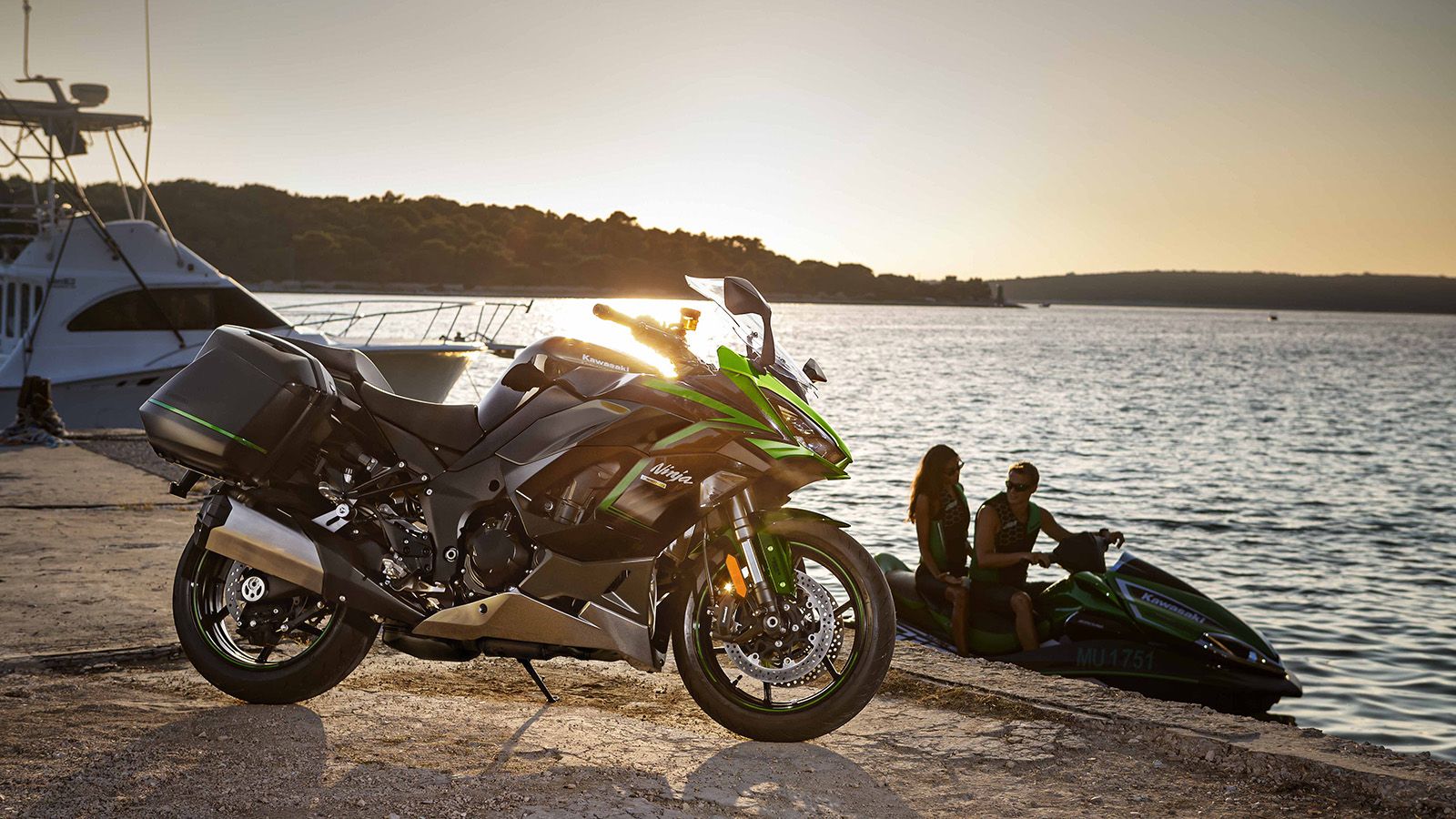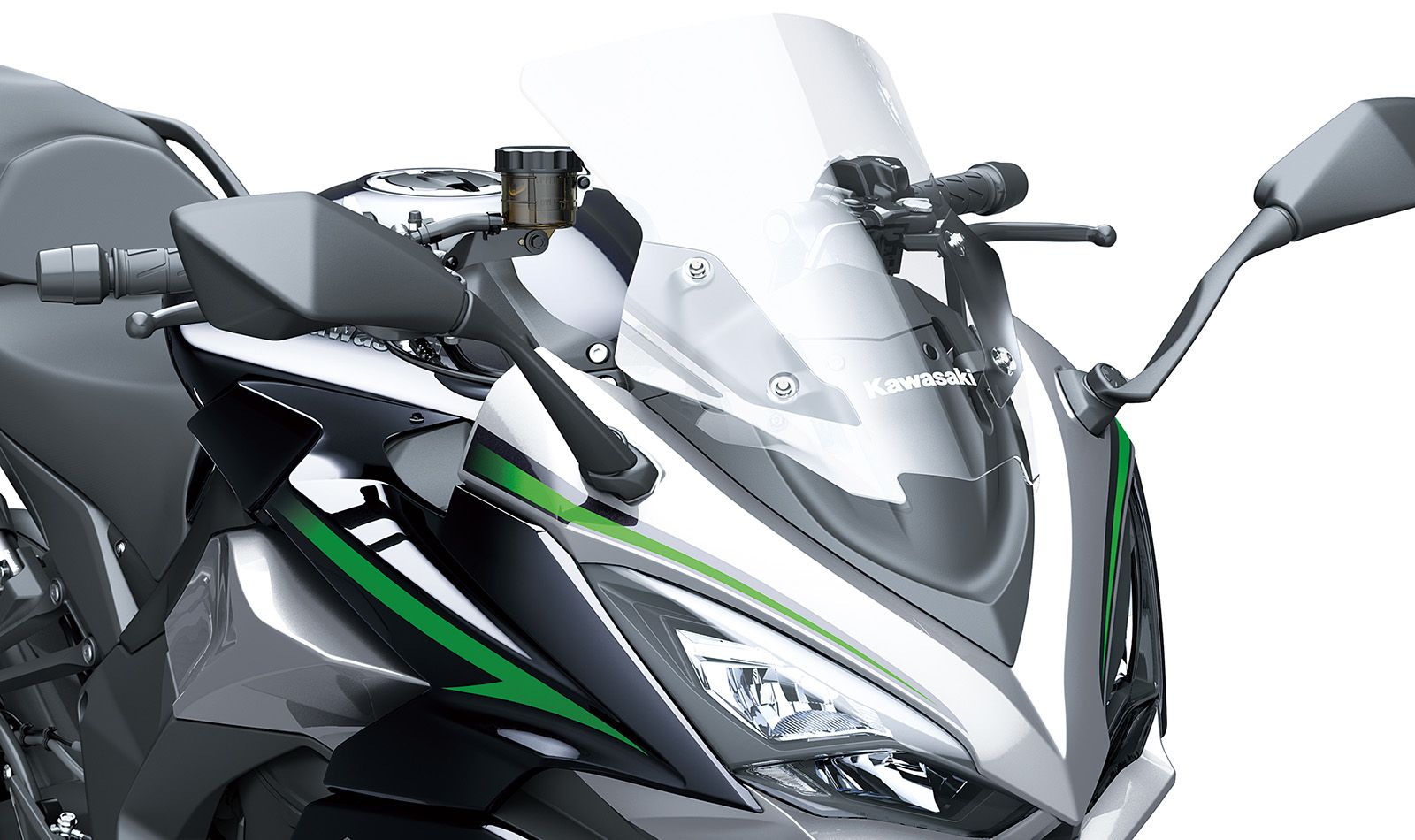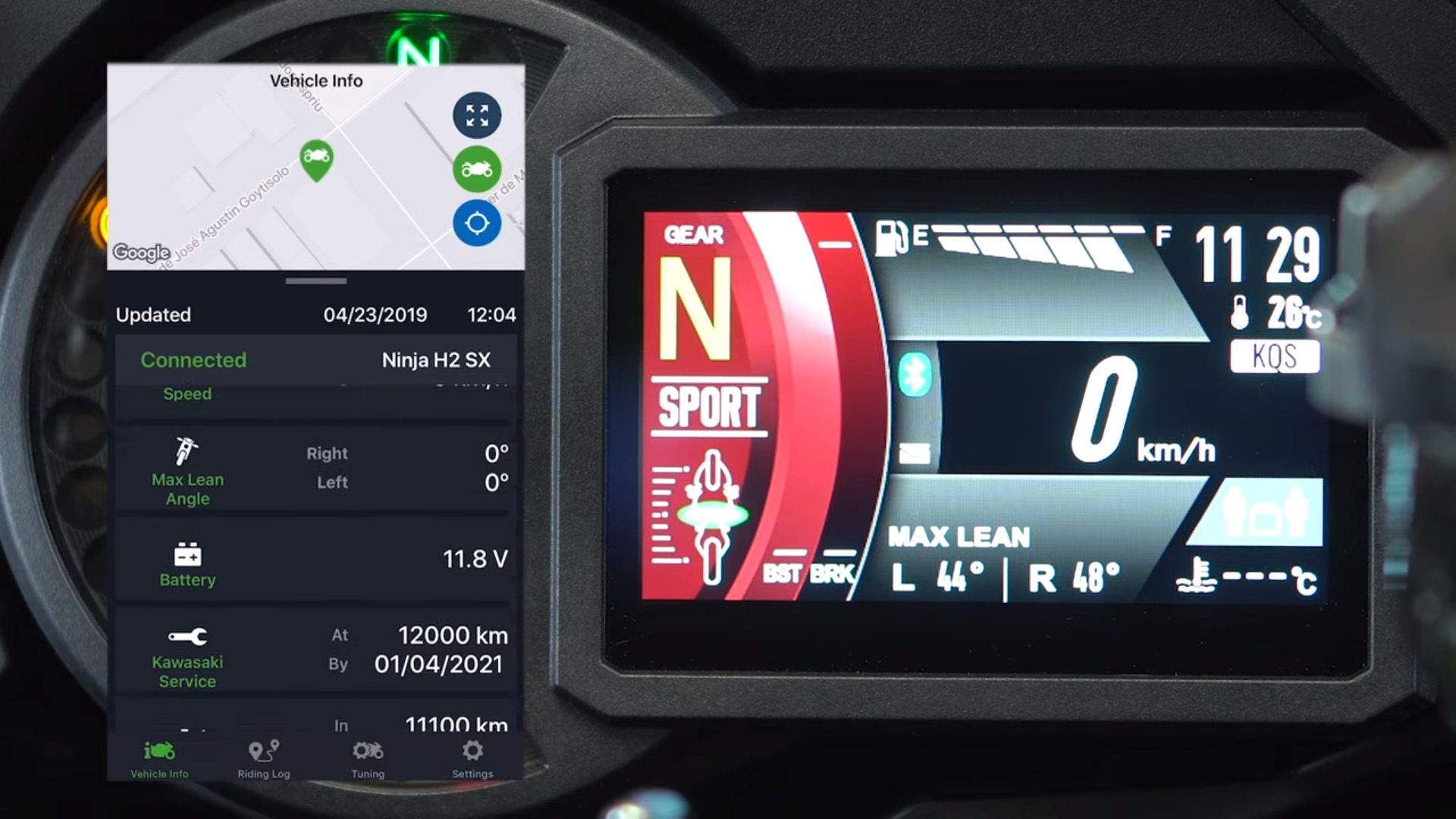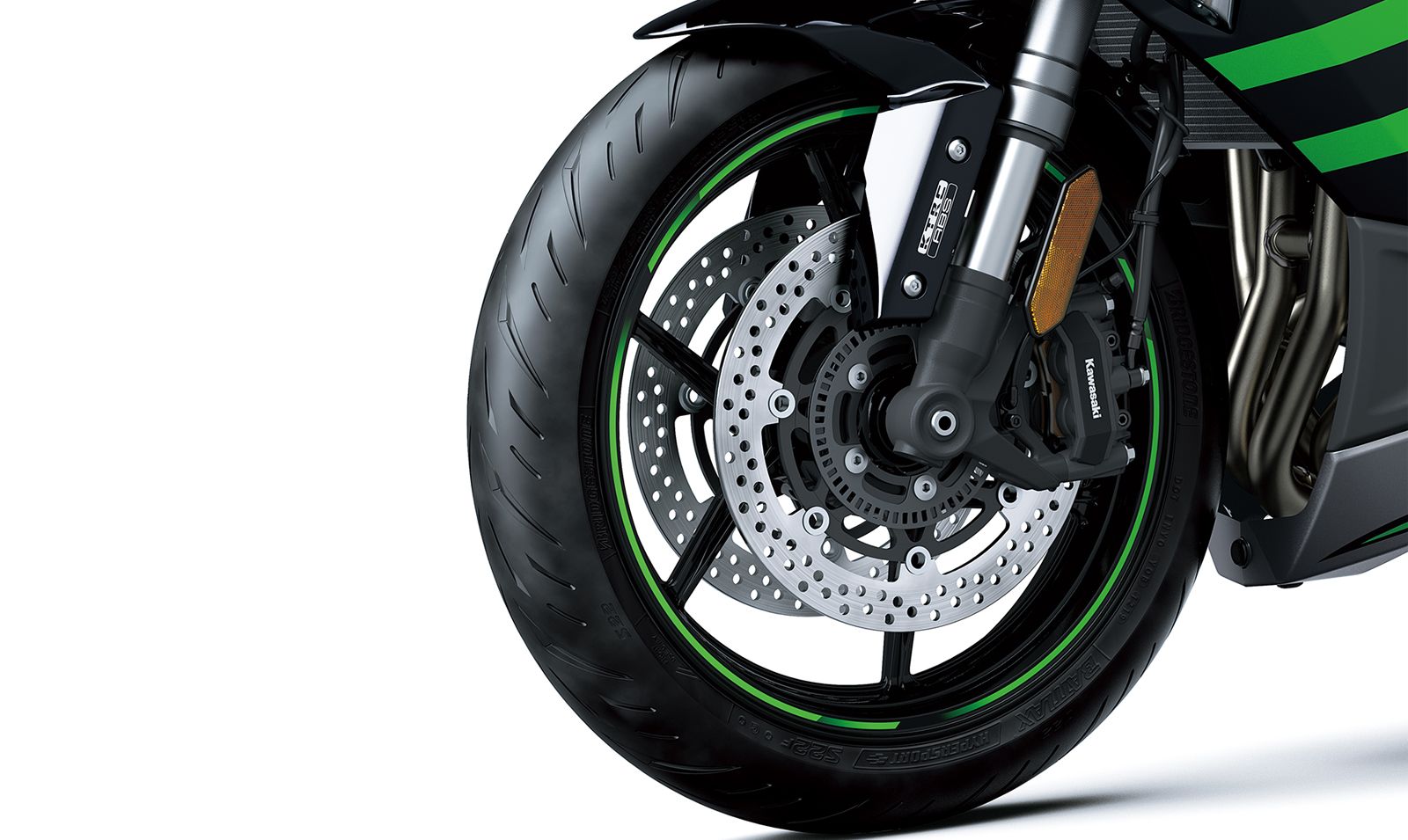Introduced in 2011, the Ninja 1000SX was also known as the Ninja 1000 in other markets once upon a time. Manufactured by Kawasaki Heavy Industries' motorcycle division, the Ninja 1000SX is part of the famous Ninja series and is classed as a sports-touring motorcycle. In its fourth generation with an unchanged lightweight aluminum chassis, the 1043cc, liquid-cooled, inline-four, 16-valve engine comes with a huge list of features to its name that includes a larger fuel tank, sharper styled bodywork and a suite of electronic rider aids.
What makes the Ninja 1000SX special is that its evolution not only reflects its design and supersport-touring capabilities but also its technological advancements in a competitive age. The engine finally gains an Electronic Throttle Valve system that allows for a precise ride-by-wire system that also controls Kawasaki’s rider-assist technology [Kawasaki Cornering Management Function (KCMF), Kawasaki Intelligent anti-lock Brake System (KIBS), Kawasaki Quick Shifter (KQS), Electronic Cruise Control and Kawasaki Traction Control (KTRC)] which is managed by a six-axis Bosch IMU (Inertial Measurement Unit). With an impressive list of electronics and sharp yet refined styling, the Kawasaki Ninja 1000SX stands out on the road, combining practicality and a versatile riding experience with a blend of performance and comfort.
10 A New Exhaust And Subtle Engine Tweaks
If you remember the Ninja 1000SX (once known as the Ninja 1000) from old, the first thing that may have hit you was not the Candy Lime Green paint scheme (if you had one in that color), but the pair of double-decker mufflers. Well, it has been updated and Kawasaki has gone in favor of a sportier four-into-two single-sided system that Kawasaki says has reduced the overall weight over the predecessor’s system by 4.4 lbs. However, it does gain a 3-way catalyzer in the collector for stricter emissions while the exhaust headers are connected to each other via join-pipes that contribute to an increased response through the rev-range.
To match the new exhaust system, Kawasaki has had to revise the length of the intake funnels in the air-box, while on previous models they were all the same length - the current Ninja 1000SX gains shorter funnels (-45mm) on cylinders 1 and 4, while on 2 and 3 they are longer and of the same length. On the engine front, Kawasaki has also reshaped the camshaft profiles to do away with tappet noise.
9 Better Wind Protection
Nothing much has changed in terms of how the windshield is adjusted, but the Ninja 1000SX does get a new windshield that can be set at a slightly more upright angle for better wind protection. Adjusting it to the available four positions from sporty to maximum is a cinch, just by depressing the windshield release lever located below the instrument panel. Taller riders over 6-foot won’t benefit from the stock windshield as it doesn’t provide much wind protection (though a wind-tunnel-designed larger windshield that extends to the rider’s hands is available via accessories), but for average-sized riders, it works just fine.
8 Electronic Cruise Control
Just over half a decade ago, Kawasaki had just started to come into its own with some decent electronics, though the ZX-10R, ZX-14R, and Ninja 1000 from 2014 did have some form of electronics, not to mention the Kawasaki GTR1400 Concours’ excellent engine management system. With the Europeans way ahead in the electronic rat race, it all began to change with the introduction of the 2015 Ninja H2. The Ninja 1000SX didn’t offer much at the time except for power modes, traction control, and ABS.
One of the things sorely missed on the Ninja 1000SX was cruise control and six years later, Kawasaki has upgraded its electronics to include it. With a simple press of a button from the left handlebar switch, and once activated to the desired speed, the rider doesn’t have to stay on the throttle continuously, thanks to an electronic throttle valve system that sends signals via the position sensor on the throttle grip to the ECU to calculate the ideal throttle position. The set speed can be adjusted using the “+” and “-” buttons.
7 Comfy Seat
Earlier versions of the Ninja1000SX had a decent seat but were not nearly as comfortable. Just a few hours on the plank seat could leave you pretty numb in a “certain” area. Kawasaki has addressed the issue by updating the shape of the front seat with denser urethane to offer increased comfort, while European and other markets get thicker and wider rider and passenger seats. Thicker, wider, and denser urethane should have been the way to go for the US market, but Kawasaki also offers a suite of seats from their accessories department to suit your type of riding.
6 Integrated Riding Modes
Kawasaki has finally gone ride-by-wire with the Electronic Throttle Valves being worked by a new position sensor on the throttle grip that ensures the correct air-fuel mixture is delivered into the engine – no more hand-assisted throttle cable. Kawasaki now has four ride modes (Sport, Road, Rain, and Rider) that link Kawasaki Traction Control Mode (KTRC) and Power Modes. The first three modes have preset power and KTRC set while the fourth, Rider Mode, can be manually set according to the rider.
- Sport: enables riders to enjoy sporty riding.
- Road: covers a wide range of situations, from city riding to highway cruising and rural roads.
- Rain: offers rider reassurance when riding on a wet road surface.
| RIDING MODE | KTRC | POWER MODE |
| Sport | 1 | F |
| Road | 2 | F |
| Rain | 3 | L |
| Rider (manual) | 1/2/3/OFF | F/L |
5 Smartphone Connectivity
Like most modern motorcycles, riders can connect wirelessly to the Ninja1000SX via a Bluetooth chip integrated into the instrument panel to access data using the “Rideology The App” smartphone application. The vehicle system can notify the rider of incoming calls, message alerts, and emails and provide information on the fuel gauge, odometer, maintenance schedule, etc. GPS route and vehicle running information can also be logged and viewed on the smartphone and if this was not enough, riding modes can be set in advance on the smartphone and uploaded while in proximity of the Ninja 1000SX.
4 TFT Color Display
The Kawasaki Ninja 1000SX gets a beautiful 4.3” instrument panel like most motorcycles of today. The TFT color instrumentation display may not appear big, but it does give the 1000SX’s cockpit a high-tech look and feel and the information delivered is highly visible. A choice of two background colors (black or white) is available to select from while the screen brightness adjusts automatically based on available light. The display functions available are a digital speedometer, gear position indicator, up-shift indicator, odometer, dual trip meter, fuel gauge, cruising distance, average fuel consumption, outside temperature, water temperature, clock, economical riding indicator, IMU indicator, KIBS indicator, and if you want to see some cooler graphical data representation upfront on the 4.3” TFT, you can display G-force, lean angle (based on feedback from the IMU), and throttle or brake force application.
3 Improved Suspension
The suspension for the Ninja 1000SX has been tweaked and fine-tuned with Kawasaki adding a low-speed slit to the 41mm inverted fork’s damping pistons that help relieve negative pressure build-up during compression - the result is a smoother fork action over bumps. The horizontally mounted rear shock pretty much remains the same in terms of preload and rebound adjustability, but the hydraulic preload hand-adjustable knob allows you to dial into a desired setting a whole lot quicker. Even in deep potholes, there is enough travel in the Ninja 1000SX’s suspension to come out comfortably.
2 New Battlax Tires
The Ninja 1000SX gets 6-spoke lightweight 17” alloy wheels which contribute to a low unsprung weight and house rolled on Bridgestone Battlax Hypersport S22 tires. The front sports a 120/70 (58W) tire while the rear gets a 190/50 (73W). Both are rated " Z " for speed and constructed from a single strand of wire instead of over-lapping belts. While the chassis has remained unchanged on the Ninja 1000SX, coupled with the tweaked suspension, both tires hook up to the road nicely providing excellent bite and feel, whether in the wet or dry.
1 Contactless Shifting
The Kawasaki Ninja 1000SX gets a new contactless-type quick-shifter that is now capable of clutchless up-shifts and down-shifts. Originally designed to help riders maximize their acceleration on the circuit by enabling clutchless upshifts with the throttle wide open, the quick-shifter technology has made its way down to a range of Kawasaki’s street-going motorcycles.
Like a lot of quick-shifters out there, shifting is seamless at high rev open-throttle, but can be irritable when puttering around at lower speeds. However, the Ninja1000SX shifts smoothly at any speed (providing the motorcycle is above 2,500rpm), up-and-down all six gears when the system detects the shift lever has been actuated.











